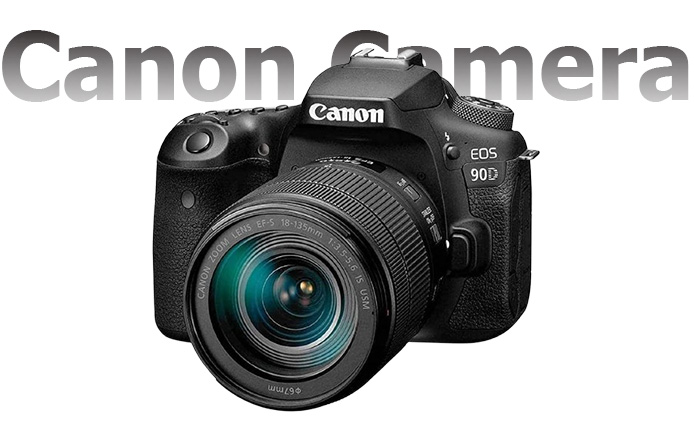If you’re a Canon camera user, you’ve probably seen the “Busy” message pop up on your screen at some point, stopping you from taking the perfect shot. It can be frustrating, especially when you don’t know why it’s happening or how to resolve it.

This issue is fairly common, but the good news is that it can often be fixed quickly once you understand what’s going on. In this article, we’ll explore why your Canon camera says “Busy” and how to address the problem step by step.
What Does the “Busy” Message Mean?
When your Canon camera says “Busy,” it’s essentially telling you that it’s occupied and can’t take any more photos or perform other tasks until it finishes what it’s doing. This can happen for several reasons, but it usually means your camera is processing data, saving images, or communicating with accessories like a flash. The camera is temporarily unable to perform new tasks because its system is busy completing other actions.
Common Causes of the “Busy” Message
Buffer Overload
One of the most common reasons your camera says “Busy” is because the buffer is full. The buffer is a temporary storage area where your camera holds photos before writing them to the memory card. If you’re taking a lot of pictures in quick succession—especially in burst mode—or shooting high-resolution photos, the buffer fills up. Once it’s full, the camera has to finish writing the data to the memory card before it can take more shots.
Solution: Wait a few seconds for the buffer to clear. To prevent this from happening in the future, try shooting fewer continuous shots or reducing your image resolution. Additionally, upgrading to a faster memory card will help the camera process and store photos quicker.
Slow Memory Card
The speed of your memory card is another big factor. If you’re using a slow card, your camera will take longer to write data to it, which can cause the “Busy” message to appear frequently. This is especially true if you’re shooting in RAW format or high-resolution JPEGs, as these file types are larger and take longer to save.
Solution: Invest in a high-speed memory card. Look for a card with a higher write speed, like a UHS-I or UHS-II card, which allows your camera to transfer data more quickly and reduces the chances of seeing the “Busy” message.
External Flash Issues
If you’re using an external flash, it could also be the culprit behind the “Busy” message. When the flash isn’t fully charged or there’s a communication error between the camera and the flash, the camera will display “Busy” while it waits for the flash to get ready.
Solution: Make sure your external flash is fully charged and correctly attached. If your flash takes too long to recharge between shots, consider upgrading to a flash with a faster recharge time.
File Transfers in Progress
If you’re transferring photos from your camera to a computer via USB, the “Busy” message may appear because the camera is occupied with the data transfer. During this time, the camera is temporarily unavailable for shooting as it completes the file transfer.
Solution: Wait for the transfer to finish before trying to take more photos. For faster transfers, consider using a memory card reader instead of transferring files directly from the camera.
Autofocus Delays
Sometimes, the camera may display the “Busy” message due to autofocus issues. If the camera is struggling to lock focus—perhaps because of low light or fast-moving subjects—it may temporarily freeze while it attempts to adjust the focus.
Solution: Try switching to manual focus to bypass autofocus delays. Improving lighting conditions or using an autofocus assist beam can also help your camera lock focus more quickly, reducing the chances of seeing the “Busy” message.
How to Prevent the “Busy” Message
While understanding the common causes is helpful, there are a few preventive measures you can take to reduce the chances of your camera displaying the “Busy” message in the future.
Use a High-Speed Memory Card
As we mentioned earlier, one of the most effective ways to prevent the “Busy” message is by using a fast memory card. The faster your camera can write to the card, the quicker it will clear the buffer and be ready for more shots. When choosing a memory card, look for one with high write speeds (expressed in MB/s). UHS-I and UHS-II cards are ideal for faster performance.
Limit Continuous Shooting
If you frequently shoot in burst mode, the buffer can fill up quickly, especially when shooting in RAW format or high-resolution JPEGs. To avoid this, try limiting how often you use burst mode. If you don’t need the extra detail of RAW files, consider switching to JPEG format, which takes up less space and processes faster.
Keep Your Firmware Updated
Canon frequently releases firmware updates to improve camera performance and fix bugs. Regularly check for updates on Canon’s official website to ensure your camera is running the latest version. Firmware updates can sometimes optimize how the camera handles data, reducing the frequency of the “Busy” message.
Give Your Camera Time to Cool Down
Overheating can also cause performance issues, including the “Busy” message. If you’re shooting for long periods, especially in hot weather, your camera may slow down to prevent damage from overheating. If this happens, give your camera a break to cool down before continuing.
Turn Off Unnecessary Features
Certain camera features, like image stabilization and high ISO noise reduction, require additional processing power. If you’re not using these features, consider turning them off to free up your camera’s resources and prevent the “Busy” message from appearing.
What to Do If the Problem Persists
If you’ve tried all the fixes above and your camera still frequently shows the “Busy” message, it might indicate a more serious issue.
Reset Your Camera Settings
Sometimes, resetting your camera to its factory settings can resolve software glitches that might be causing the “Busy” message to appear frequently. Just be sure to back up any important settings or custom configurations before performing a reset.
Check for Hardware Problems
If resetting the camera doesn’t fix the issue, there could be a hardware problem that needs attention. This could involve the memory card slot, the battery, or even the internal circuits of the camera. In this case, it’s best to contact Canon’s customer support or take your camera to an authorized repair center for a thorough inspection.
Use Different Lenses or Accessories
Sometimes, the issue could be with a lens or external accessory. Try swapping out lenses or removing accessories like an external flash to see if the problem persists. If the camera works fine without these accessories, the problem might lie with the attachment rather than the camera itself.
Final Thoughts
The “Busy” message on your Canon camera can be a minor inconvenience, but understanding why it happens and how to quickly fix it can make a big difference. Most of the time, this message is related to temporary data processing delays, a slow memory card, or external device issues like an uncharged flash. With a few adjustments such as using a faster memory card, reducing burst shooting, or performing regular firmware updates you can minimize the chances of running into this issue.
By staying proactive and knowing how to troubleshoot on the go, you’ll spend less time waiting for your camera and more time capturing amazing photos!
CHECK THESE OUT:
